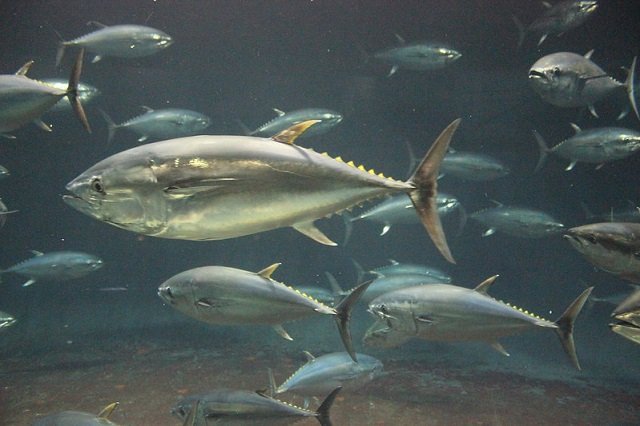
There is a consensus in the international scientific community regarding the recognition of fish as sentient beings. This has prompted several countries to implement norms and regulations to protect fish when they are commercially raised.
Among the numerous species cultivated in aquaculture, Nile tilapia (Oreochromis niloticus) stands out as one of the most popular due to its adaptability and rapid growth.
However, the welfare of these fish throughout their life cycle in aquaculture is a growing concern and has not been comprehensively assessed.
A study by scientists from Wai Ora—Aquaculture and Environmental Technology Ltd. and the Federal University of Paraná evaluated the welfare of Nile tilapia (Oreochromis niloticus) throughout the entire production cycle, from reproduction to slaughter.
Evaluating the welfare of tilapia
The primary aim of a recent study was to comprehensively evaluate the welfare of Nile tilapia in aquaculture, from reproduction to slaughter. To achieve this, a structured methodology was employed to identify welfare indicators aligned with the principles of animal freedoms defined by the Farm Animal Council.
These indicators, grouped into four categories/freedoms, encompassed environmental, health, nutritional, behavioral, and psychological aspects. It’s important to note that psychological freedom was inherently considered within the analyses of animal behavior and health.
Environmental welfare indicators
In this category, researchers included 12 indicators for different stages of cultivation. Physical-chemical water indicators were standardized across all stages, preventing shocks during the transfer of animals between phases.
Health welfare indicators
Health indicators were established by considering morphological abnormalities in tilapia during their ontogenetic development, observing aspects corresponding to different life and production phases. Additionally, health indicators during the nursery phase were subdivided according to the ontogenetic development stage of the fish: larvae, postlarvae, and fingerlings.
Stay Always Informed
Join our communities to instantly receive the most important news, reports, and analysis from the aquaculture industry.
Nutritional welfare indicators
Researchers defined four nutritional indicators relevant to all cultivation phases: crude protein content in the feed provided to the fish, the amount of food relative to the batch biomass, feeding frequency, and food distribution range in the respective cultivation system.
Behavioral welfare indicators
“Behavioral welfare indicators were established based on management practices commonly adopted during the reproduction and grow-out phases,” they reported. During the nursery phase, swimming behavior was selected as the sole viable indicator for visual analysis of larvae and postlarvae, establishing swimming characteristics across different phases.
Scientific tools for animal welfare
To carry out this comprehensive evaluation, researchers conducted a systematic review of scientific literature to define precise indicators and their corresponding reference values for each stage of tilapia cultivation. These reference values were categorized using a scoring system that assessed the deviation of each indicator from ideal (score 1), tolerable (score 2), and critical (score 3) ranges for the welfare of the target species.
Furthermore, a laboratory experiment was conducted to validate pre-selected health indicators specifically designed for the early life stages of tilapia. This trial allowed for the assessment of the applicability of these indicators under operational conditions.
Quantitative measurement of animal welfare in tilapia
Building on insights gained through experimentation and literature review, partial welfare indices (PWIs) were calculated for each evaluated freedom, culminating in the derivation of a general welfare index (GWI). Mathematical formulas were used to calculate these indices, offering a quantitative and standardized measure of welfare.
Implications for the tilapia aquaculture industry
The scientific approach described in the study provides tilapia producers and processors with the necessary tools to continuously monitor and improve their production systems. It also encourages the adoption of more sustainable and ethical practices in tilapia aquaculture. By understanding and quantifying the welfare of tilapia, the aquaculture industry can take concrete steps to ensure these fish are raised and processed more humanely and sustainably.
Conclusion
In summary, the comprehensive evaluation of the welfare of tilapia in aquaculture is an important step towards more ethical and sustainable food production. By using scientific methods and quantitative tools, we can ensure that tilapia are raised in conditions that respect their biological and psychological needs while meeting the growing global demand for this important food resource.
“In this study, we have proposed a detailed and quantitative approach to assess the welfare of Nile tilapia throughout the life cycle (eggs, larvae, postlarvae, juveniles, and adults) and all cultivation phases,” emphasize the researchers.
They also indicate that their approach has generated a valuable and standardized tool for aquaculturists to monitor and improve their production systems, with the potential to significantly enhance the welfare of O. niloticus.
The study was funded by FAI Farms.
Contact
Ana Silvia Pedrazzani
Wai Ora—Aquaculture and Environmental Technology Ltd.
Curitiba, State of Paraná, Brazil
Email: anasilviap@ufpr.br
Reference (open access)
Pedrazzani AS, Cozer N, Quintiliano MH, Tavares CPdS, Biernaski V and Ostrensky A (2023) From egg to slaughter: monitoring the welfare of Nile tilapia, Oreochromis niloticus, throughout their entire life cycle in aquaculture. Front. Vet. Sci. 10:1268396. doi: 10.3389/fvets.2023.1268396
Editor at the digital magazine AquaHoy. He holds a degree in Aquaculture Biology from the National University of Santa (UNS) and a Master’s degree in Science and Innovation Management from the Polytechnic University of Valencia, with postgraduate diplomas in Business Innovation and Innovation Management. He possesses extensive experience in the aquaculture and fisheries sector, having led the Fisheries Innovation Unit of the National Program for Innovation in Fisheries and Aquaculture (PNIPA). He has served as a senior consultant in technology watch, an innovation project formulator and advisor, and a lecturer at UNS. He is a member of the Peruvian College of Biologists and was recognized by the World Aquaculture Society (WAS) in 2016 for his contribution to aquaculture.




